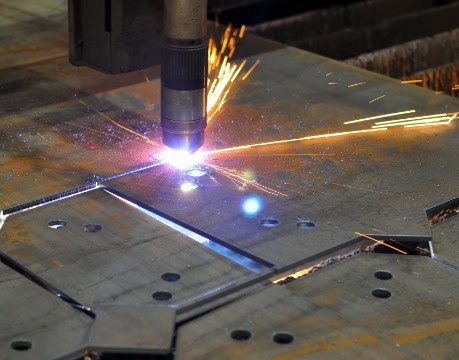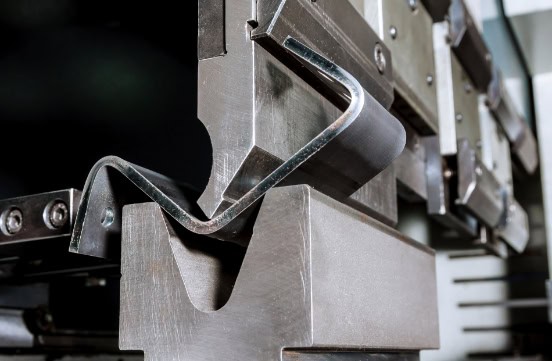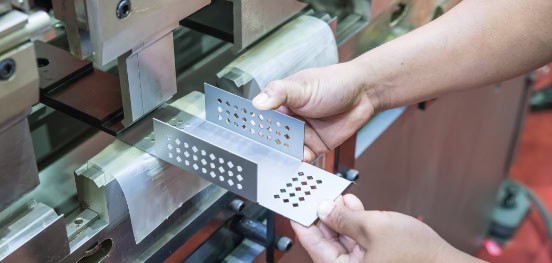Metal Fabrication Selection Guide: Types & Applications
Diverse industries require metal fabrication services to produce an array of components, assemblies, and finished products. For generating anything from everyday-use goods to highly specialized equipment parts, these versatile processes allow manufacturers to create simple or complex items efficiently and with precision. Learn more about the various metal manufacturing processes that make up metal fabrication, process-compatible materials, and how to select the right fabrication technique and service provider for your project.
How to Choose the Best Metal Fabrication Process for Your Project
The ideal metal fabrication process for your application is based on numerous factors. You should first consider the following aspects of your project before committing to a fabrication method:
Material Type
Every material has its own unique properties, making it more compatible with some fabrication techniques than others. The process you ultimately select should be a good fit for your material’s workability, thickness, hardness, and related characteristics.
Product Design
Components with intricate designs, profiles, or angles require fabrication processes that are capable of achieving that level of precision. As an example, laser cutting might be preferable to plasma cutting in such cases as it can generate thinner, more accurate cuts.
Quantity
Some fabrication processes are better suited to small or average-sized production runs, whereas others are meant for high-volume manufacturing. Understanding your volume needs will help you choose between, for instance, laser cutting for small-batch precision or metal stamping for mass production.
Lead time
Similarly, keep your desired lead time in mind when deciding on a metal fabrication process. You should focus on techniques that can achieve your desired productivity levels and run size within your project schedule.
Budget
Manufacturing run size is only one factor making up production costs. The fabrication method you select should maximize cost efficiency based on your specific part design and material choice. Consider which process will give you the best price per part and economy of scale.
Quality
Whichever method you choose, it should deliver the quality you expect, producing goods that meet your specifications, industry standards, and tight tolerance windows. CNC machining is one example of a fabrication process known for its ability to generate precise and repeatable parts with close tolerances.
Another critical factor to your project's quality, however, is choosing the right metal fabrication partner for your needs. It's important to select a service provider with extensive experience — preferably in your industry — as well as the capabilities, quality assurance practices, equipment, scalable capacity, certifications, and reliable customer support necessary for your project. You can ascertain a company's reputation on these factors by reviewing its website, Better Business Bureau (BBB) rating, and online company reviews. Visit our How to Source a Metal Forming Company page to learn more.
Perhaps the most ubiquitous of all metal fabrication processes, cutting can be employed alongside other methods. In general, cutting offers several advantages with more modern techniques providing enhanced manufacturing capabilities. Some of the advantages of using cutting to fabricate metal parts include greater precision, higher repeatability, faster production speeds, and better cost-effectiveness.
Forming/Bending
Unlike cutting, forming (or bending) doesn’t remove material from the metal workpiece. Instead, the process alters the workpiece with a die, a machine such as a press brake, or a handheld method such as a hammer to fit the required specifications.
Metal fabricators use forming operations — e.g., rolling, indenting, and bending — to produce many metal parts, such as pipes, enclosures, and boxes. The advantages of using these operations include broader product capabilities and greater part design flexibility, achieving complex shapes and geometries.
In general, welding allows for minimal waste production, reduced labor and material costs, and process portability.
Stamping
This process uses a top and bottom die molded into a custom three-dimensional shape. When the metal is pressed between the two dies, it conforms to the desired shape. Manufacturers use this process to make many complex metal shapes across a diverse set of industries, such as body panels for the automotive market. The stamping process allows for higher precision and accuracy, faster production speeds, and lower per-unit production costs (for high-volume runs).
Machining
Machining uses CNC-controlled machinery with various cutting tools to rapidly produce a custom three-dimensional metal component by removing unwanted materials. This is a broad industrial term for subtractive manufacturing processes, such as drilling, milling, and turning. While some companies still rely on manual machining units, many have adopted the use of computer numerical control (CNC) machining equipment. The latter enables industry professionals to achieve tighter tolerances, higher production consistency, and greater cost-efficiency (for small to medium runs).
Frequently Asked Questions (FAQs)
Partner With Us for Expert Metal Fabrication Solutions
At G.E. Mathis Company, we have over a century of experience providing metal fabrication solutions. If you have a metal fabrication project, we can meet your needs. Contact us today for more information on our metal fabrication capabilities or request a quote from one of our experts for your next project.
Request Quote
Please complete the form below and we will contact you shortly.
Over 100+ Years of Experience
Trained & Certified Expertise
Reliable Customer Service
























